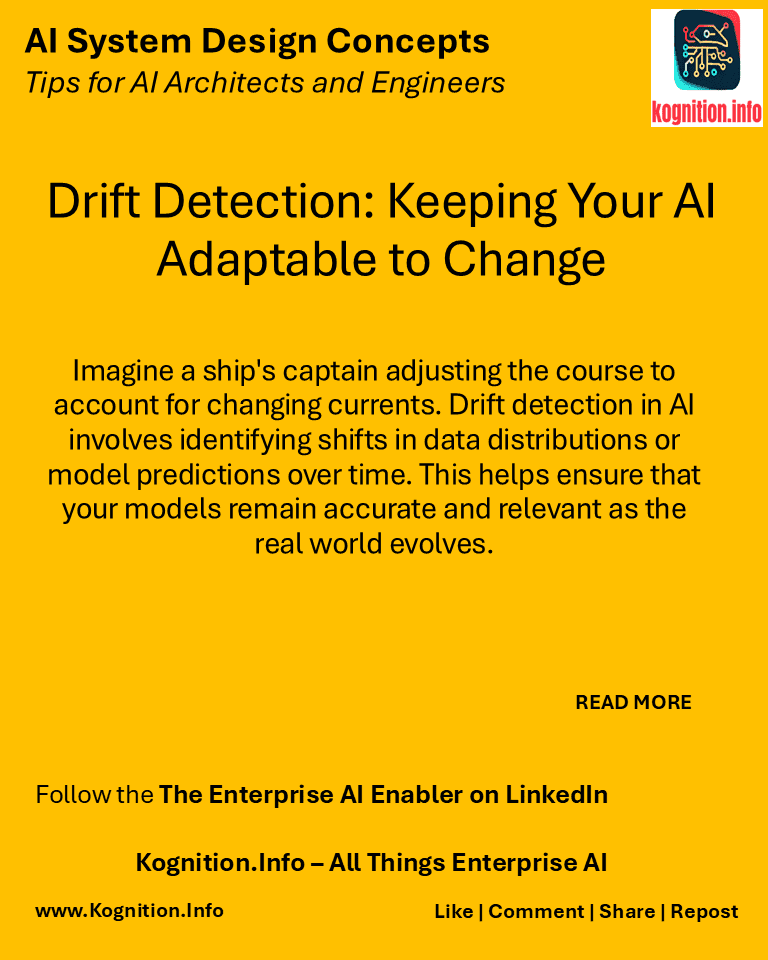
Imagine a ship’s captain adjusting the course to account for changing currents. Drift detection in AI involves identifying shifts in data distributions or model predictions over time. This helps ensure that your models remain accurate and relevant as the real world evolves.
Use cases:
- Maintaining model accuracy: Detecting when a model’s performance degrades due to changes in the data it’s processing.
- Adapting to new trends: Identifying emerging trends or patterns in data that may require model retraining or updates.
- Preventing bias: Detecting shifts in data that may introduce bias into model predictions.
How?
- Monitor data distributions: Track changes in the statistical properties of input data over time.
- Analyze model predictions: Observe changes in the distribution of model predictions or error rates.
- Utilize drift detection algorithms: Employ algorithms to automatically detect significant shifts or anomalies in data or predictions.
- Retrain or update models: Retrain models on new data or update model parameters to adapt to changes.
Benefits:
- Sustained model accuracy: Ensures that models remain accurate and relevant over time.
- Improved adaptability: Allows AI systems to adapt to changing real-world conditions.
- Reduced bias: Helps prevent bias in model predictions caused by data drift.
Potential pitfalls:
- False positives: Normal fluctuations in data can trigger false alarms.
- Delayed detection: Detecting drift too late can lead to significant performance degradation.
- Complexity: Implementing drift detection can require specialized knowledge and tools.
